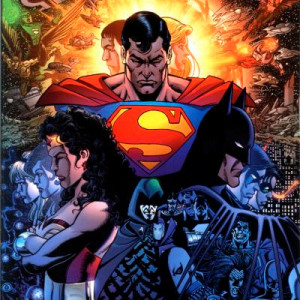I was thinking about the timeline of DC Comics’ Earth-51 (home to the Great Disaster in Countdown to Final Crisis) and trying to wrap my head around what the past and present might mean for a world that’s been created and destroyed twice in as many years, and realized that some of the time paradoxes make much more sense if you consider that there’s more than one kind of time.
Real-world time is, as you’d expect, the time that passes between when two stories are published. For example, it’s been 45 years since Spider-Man first appeared in Amazing Fantasy #15 (Aug. 1962).
In-story time is the time that passes within a story. So even though it’s been 70 years since Superman first appeared on the newsstand, it’s only been 10–15 years since his debut within the DC Universe.
The tension between these two leads to a strange, fluid take on time, which has its own issues.
But then you get into time travel and cosmic retcons, and in-story time can’t quite explain things. Continue reading
 “Obviously, he’s a ta’veren!” Katie said. I laughed for a second, but then remembered an interview I’d read about Infinite Crisis. It actually fits.
“Obviously, he’s a ta’veren!” Katie said. I laughed for a second, but then remembered an interview I’d read about Infinite Crisis. It actually fits.